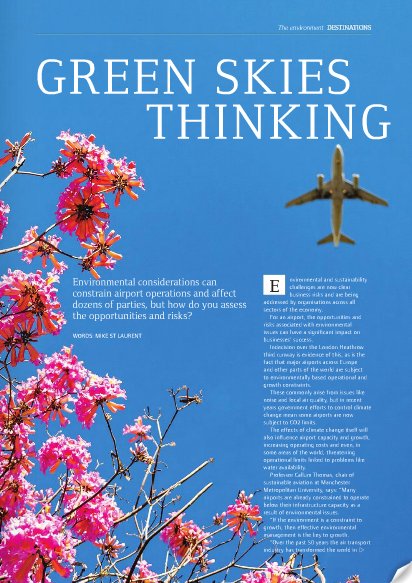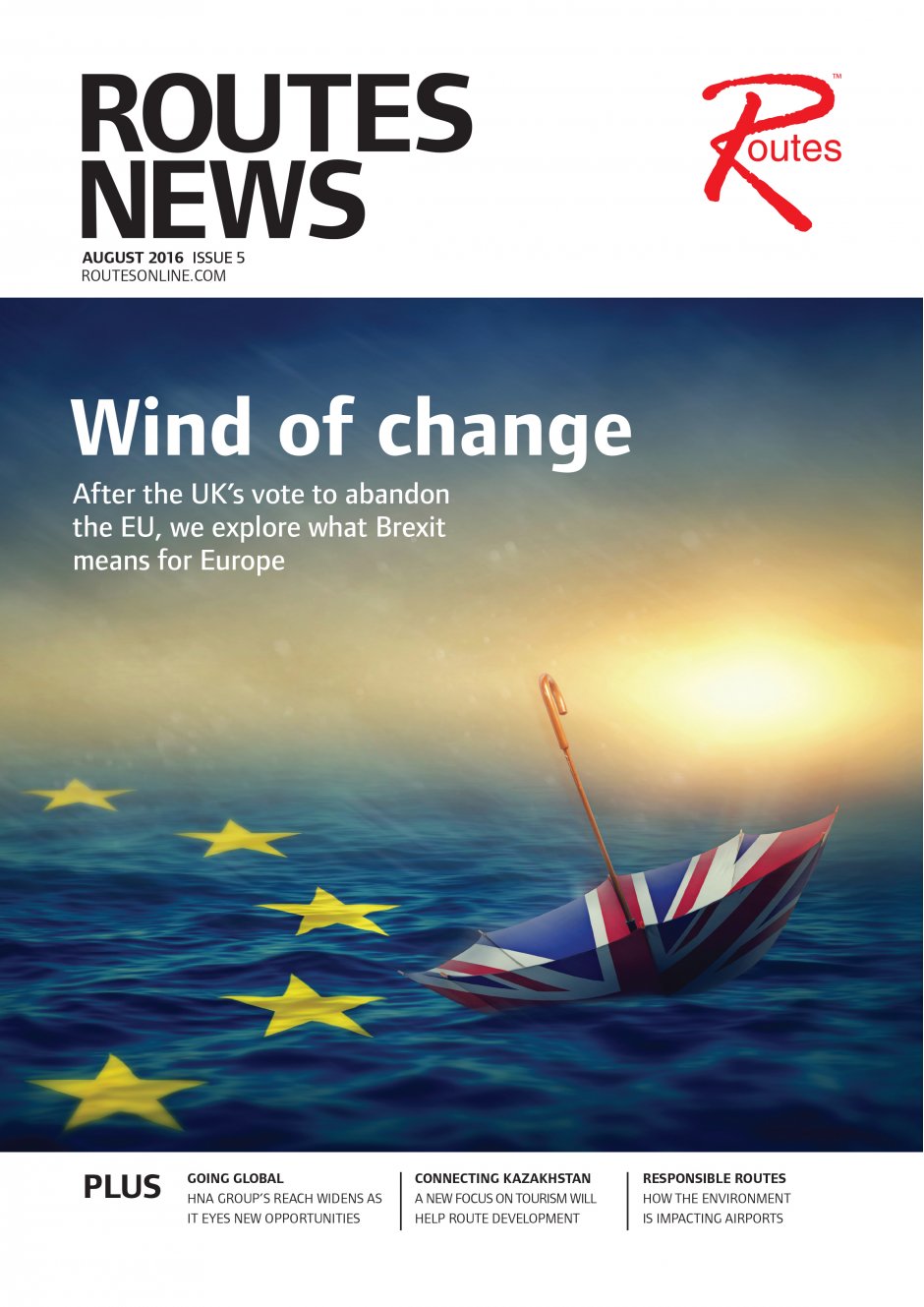Green skies thinking - overcoming environmental and sustainability challenges
Environmental and sustainability challenges are now clear business risks and are being addressed by organisations across all sectors of the economy. For an airport, the opportunities and risks associated with environmental issues can have a significant impact on businesses’ success.
Indecision over the London Heathrow third runway is evidence of this, as is the fact that major airports across Europe and other parts of the world are subject to environmentally based operational and growth constraints. These commonly arise from issues like
noise and local air quality, but in recent years government efforts to control climate change mean some airports are now subject to CO2 limits.
The effects of climate change itself will also influence airport capacity and growth, increasing operating costs and even, in some areas of the world, threatening operational limits linked to problems like water availability. Professor Callum Thomas, chair of sustainable aviation at Manchester Metropolitan University, says: “Many airports are already constrained to operate below their infrastructure capacity as a result of environmental issues. If the environment is a constraint to growth, then effective environmental management is the key to growth.
“Over the past 50 years the air transport industry has transformed the world in which we live, creating and supporting
new patterns of trade and migration, the multicultural society found in many parts of the world and the international tourism industry.
“We cannot predict the role it will play in the environmentally constrained world of the second half of the 21st century. It will depend upon the way in which we deal with the adverse environmental impacts arising from aviation today and in particular the challenge that will be posed by the changing climate over the coming decades.”
Most importantly, effective environmental management, and therefore sustainable growth, requires the collaboration and cooperation of all the different stakeholders in the air transport industry: airport operators, airlines, air traffic management providers, ground transport companies, even retail and catering companies and, of course, the travelling public.
Environmental management systems used at airports are unique, involving sometimes hundreds of different companies, of different sizes and all with different and sometimes conflicting interests. These can have significant commercial implications, for example between the need to promote public transport access to airports and the resulting loss of car park income.
Strategic and short-term investments are required to sustain long-term growth. Trade-offs have to be made to ensure the appropriate sustainable balance is achieved between minimising operating costs, investing in airport capacity, meeting service partner needs, maintaining customer services standards and reducing environmental impacts.
Professor Thomas says: “The flight path into and out of an airport can affect the daily lives of tens of thousands of people. The air quality around an airport, which can impact upon the health of thousands of local residents, is influenced by millions of cars, tens of thousands of aircraft movements, onsite generation of energy and handling of aircraft on the ramp.
"For climate change, while aviation is responsible for 2-3% of CO2 emissions from human activities, the proportion of people around the world who fly is tiny. What happens in the future when the Chinese and Indians become as mobile as the Europeans?”
To tackle these issues the Centre for Aviation, Transport and the Environment (CATE) and ASM (Airport Strategy & Marketing) have launched a training course, The Environment – Opportunties and Risks for Airports, that explains how to manage the environmental issues that can affect airport growth and development. The course takes place on November 2-3, 2016 in London.
Attendees of the course will gain valuable insight into how to tackle the environmental issues facing airports, how to manage the business risk that they pose and how to maximise the potential for air transport to contribute to city and regional development.
Back to school: tackling the issues
The Centre for Aviation, Transport and the Environment (CATE) at Manchester Metropolitan University has a 25 year record of research and knowledge transfer in the field of sustainable aviation, securing over £20 million research income from government and industry.
The Environment – Opportunities and Risks for Airports course is run by Professor Callum Thomas, chair of sustainable aviation at Manchester Metropolitan University. He has been an academic for 18 years after 13 years in the aviation industry. Course modules include the environmental impact on airport operation and growth and profitability implications. To find out more, and to book a place email Alex Cooper or call +44 (0)7989 400 953.
 |
This article is modified from an original feature that appeared in... ROUTES NEWS - ISSUE 5, 2016 PLEASE CLICK HERE to view the magazine. |
 |





